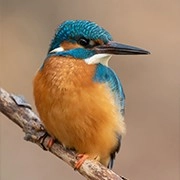One Bite World

let’s take a journey that starts with a simple crunch — the kind that makes us smile without even thinking. Apples may look similar, but their taste can change completely depending on where they grow.
From the snow-covered orchards of Aomori to the sunny fields of Washington State, every apple carries the story of its land, climate, and care. Today, let’s follow their path and discover what makes each one so unique.
Aomori, Japan — Artistry in Every Apple
At Japan’s northern tip, Aomori is the country’s apple capital, known for its dedication to quality and detail. The region enjoys cool summers, snowy winters, and a humid ocean breeze that slows ripening, helping apples store more sweetness and aroma. Farmers here believe that patience grows perfection — they focus on organic soil care, gentle pruning, and balanced sunlight to craft apples that taste as beautiful as they look.
Among the most famous are the Orin and Mutsu varieties. Orin apples are golden and crisp with a gentle honey scent and a mild, refreshing sweetness. Mutsu apples are larger, with dense flesh, high sugar content, and a rich aftertaste that lingers. Every stage — from thinning blossoms to hand-selecting fruit — is done with precision. Even their grading process measures sweetness, color, and shape, ensuring that when we take a bite, it’s not just good — it’s perfect.
Washington State, USA — Innovation Meets Flavor
Across the Pacific, Washington State in the U.S. is another world-famous apple region. The climate is dry and sunny, with the Cascade Mountains blocking excess rain and the Columbia River providing irrigation. The soil here is sandy loam — rich yet well-drained — giving apple trees exactly what they need to thrive.
Washington grows many popular varieties, each with its own character. Honeycrisp apples are known for their snap and juiciness, a perfect blend of sweet and tart. Gala apples have a lighter, floral flavor and a smooth, crisp texture. Cosmic Crisp, a newer hybrid, offers long-lasting crunch and balanced sweetness that stays even after months of storage. Modern farming here uses smart irrigation, precise pruning, and high-tech storage to keep apples fresh and flavorful all year. When we bite into one, it’s like tasting the bright, dry sunshine of Washington itself.
New Zealand — Sunshine and Sea Breeze Perfection
Further south, New Zealand’s mild maritime climate gives apples a special charm. With long, gentle summers and clean coastal air, the fruit here ripens slowly, building natural sugars and juicy texture. Most orchards are in Hawke’s Bay and Nelson, where rolling hills and consistent sunshine create ideal growing conditions.
The Jazz and Envy apples are among the stars. Jazz apples are crisp, tangy, and refreshing — the kind that wakes up the taste buds instantly. Envy apples, on the other hand, are smooth and sweet, with a subtle fragrance that feels almost tropical. Many farms here follow sustainable and eco-friendly growing methods, using natural fertilizers and minimal chemicals, so the apples taste pure and natural.

France — Classic Elegance from the Countryside
In the calm orchards of Normandy and Loire Valley, French apples bring a touch of elegance. The cool European climate and fertile soil help apples grow slowly, resulting in firm, aromatic fruit. Farmers here often favor traditional methods, allowing apples to ripen naturally on the tree.
Varieties like Reine des Reinettes and Golden Delicious stand out for their balanced flavor — gentle sweetness with a light tart edge. They’re ideal for fresh eating or cooking, giving a soft, fragrant flavor that feels timeless. The French approach to apple growing is less about mass production and more about artistry, flavor, and tradition — something we can taste in every delicate bite.
Why Place Shapes Taste
What makes each apple taste so different? It all comes down to nature’s recipe: sunlight, soil, water, and temperature. Aomori’s cold nights enhance sweetness; Washington’s dry air keeps fruit firm and crisp; New Zealand’s sea breeze adds freshness; France’s slow ripening builds aroma. Variety also matters — each type has its own sugar-acid balance, texture, and scent — but the land completes the flavor story.
Even small farming choices can change the result. Bagging protects the skin, pruning balances nutrients, and gentle irrigation controls growth. Together, these details turn a simple apple into a reflection of its home.
How We Can Pick the Best Apple
When choosing apples, we can use our senses. Look for bright, smooth skin and a natural shine — that often means freshness. Feel the weight; heavier apples are juicier. Smell the stem area — a rich, fruity scent tells us it’s ripe. For a crisp snack, go for Honeycrisp or Jazz; for a sweet dessert, choose Envy or Mutsu. Store apples in a cool place, and let them warm to room temperature before eating to bring out their best aroma and flavor.
Final Crunch — A World in Every Bite
Lykkers, every apple we eat carries a story — the snow of Aomori, the sunshine of Washington, the sea air of New Zealand, the charm of France. It’s more than fruit; it’s the taste of nature, care, and patience coming together.
Next time we take a bite, let’s slow down and listen to that satisfying crunch. Somewhere in that sound is the echo of orchards across the world — sweet, crisp, and alive. So, Lykkers, which flavor of the world will we taste next?
FASCINATING APPLE TASTE TEST! | Is this the BEST Tasting Apple in the World?!?
Video by The Taste Test Channel

 · Cate team
· Cate team